- Getting around Lijiang. Dont stay in the Old Towns more than 2 days, there is nothing to do. KRISS Oct 9, 2013 05:46
- 2013 Beijing Temple Fair BENNYLAU Feb 26, 2013 03:29
- Malaysian traveling from KUL - LAX vis Shanghai PVG ZATI_DY Jan 3, 2013 20:15
Pingxiang on the Border
- Views: 9778
- |Vote: 2 1
- |Add to Favorites
- |Recommend to Friends
The End of China
I made my first land crossing into China in May 2005 over the Vietnamese border into Yunnan, and it was at the time for me quite an emotional experience. I’d been away from China for two years and had wondered if I’d ever get to return – to walk the final few kilometres from the railway station at Vietnamese Lao Cai and cross the bridge on foot into Yunnanese Hekou was a major sense of triumph and a feeling that was not unlike coming home.
Now. More than a year later, I was on my way out again into Vietnam, this time headed for the middle pass – called the Friendship Gate – which serves as the main thoroughfare of the three possible border crossings for overland travellers between China and Vietnam. My emotion on this occasion was not so much a feeling of leaving or arriving home – but instead a sensation of freedom, that I had the power and the ability to get myself across vast distances of the Asian continent comfortably and at will – and that I knew clearly where I was going and where I was leaving from.
At the Front of the Train
There’s a train into Vietnam that comes all the way from Beijing, and I’d considered taking it until I’d realised that the journey takes a full two days and two nights to get to Hanoi – and given I was crossing straight on to a connection to Saigon – another two night’s journey – it would mean rather more time in hard berth than I was interested in taking at once, much as I enjoy long train journeys.
An additional factor was the cost. I’d instead hopped down to Nanning on two separate trips – stopping a couple of days in Nanchang, and still keeping well within my travel budget. It’s often quite economical to break long train journeys this way, and enjoy stopover destinations on the road.
I found the international train booth in the Nanning train station – the last booth on the right – and enquired about getting on the train from Beijing as it passed through Nanning, only to find it was booked solid. I was advised instead to take the train down to the Guangxi border town of Pingxiang and cross into Vietnam there, taking a bus on the other side into Hanoi. That way, the whole trip would also cost RMB200 less than an overnight direct rail link – a good tip for a traveller on a budget. I bought an 8.00am ticket from Nanning to Pingxiang – a three hour trip at only RMB17 – and got my seat – first carriage, seat one. I’d be right at the head of the train out of China.
The Last Stretch South
My first impression of Guangxi Province had been of the soft, rounded balding grey peaks of Guilin. The very same odd geological feature, giving rise to those poignant photographs of conical behatted peasants knee-deep in lush green rice paddies with those great peaks towering serenely behind them, continue to crop up here and there about the province, and as I sat on the train chugging down to Pingxiang I took the chance to admire their appearance on the landscape. The train itself was an old and grubby assortment of bumpy carriages, and I chatted cheerfully with my fellow passengers as it tossed us around on the tracks. Two of my fellow passengers sharing the pole position booth were journalism students, heading into Pingxiang to interview ethnic minority groups on the border – the other student was a girl studying Vietnamese in Hanoi. She told me that many Chinese students are now choosing to study and live south of the border where good jobs can be found by even those with rudimentary Vietnamese skills. Excellent business relationships between China and Vietnam provides a good market for Chinese graduates in Vietnamese.
Things weren’t always so good between Vietnam and China – in 1979 a war was fought from Pingxiang, Chinese troops invading Vietnam in a move that was described in Beijing as ‘teaching the Vietnamese a lesson’. According to the Chinese viewpoint, the Vietnamese were ungrateful for China’s support in the American war, and were treating ethnic Chinese in Vietnam unfairly. They were also moving closer to relations with Moscow, about which the Chinese were very wary, and skirmishing with neighbouring Cambodia, a Chinese ally. Troops accordingly swarmed into Vietnam and were mowed down by machine gun fire – prompting a tactical change, whereupon the Chinese successfully took several small Vietnamese towns, blew them up, and withdrew. Let that be a lesson, they said. 20,000 Chinese soldiers had been lost.
Little Guilin
There’s a gorge in Liaoning province called Little Guilin, for its resemblance to the striking scenery of Guilin’s Li River. Pingxiang quickly revealed itself to be the little Guilin of the city itself – for this small remote town has a look about it that resembles Guilin city with its old homes towered over by those distinctive mountains I’d been watching from the train windows. Stepping out from the Pingxiang train station, I looked up at the descending clouds sinuously caressing the green, leafy mountaintops as the soft rain drizzled onto the concrete. A troupe of mototaxis hollered at the disembarking passengers, offering rides the last few kilometres to the Vietnamese border – generally an RMB20 fare, although I was personally quoted a lot more. I wasn’t ready to leave China just yet, however – there was time enough for one last meal – and I followed my new student friends into a small roadside restaurant to enjoy some south Guangxi cooking.
Garage style restaurants are common in smaller southern Chinese towns, and they always serve outrageously cheap and generous meals, that invariably taste better than the expensive cuisine of upper-class restaurants. I mentioned shyly that I don’t eat meat, and was astonished to find that every single one of my new Chinese travel companions was also a vegetarian – fellow leaf-eaters, this never happens in China – it’s hard enough to find a sympathetic meat-eater. We dined on a variety of local veggies stirred up with garlic and huge bowls of rice. Particularly delicious were the sweet potato leaves – Guangxi people fry up the leaves rather than the tubers (which are used in other dishes) and consider them to be the ‘king of vegetables’ – the vegetable most replete with nutrients. Their taste was rather good too.
The Friendship Gate
Pingxiang is a charming little green-grey location, and one worth exploring if you have the time – there are even some good spots to climb those pretty mountains. I was on a tight schedule, however, and so I farewelled the journalism students and got into a taxi with my language student friend who was returning to her apartment in Hanoi. RMB20 later, we were dropped at the entrance to the border crossing. There’s a ticket booth at the gate, but my friend told me to ignore it – “they never call at you, they’re only there to cheat tourists.” As the gate itself is an impressive historic structure, I presumed that tickets are sold to non-crossing visitors, but with my backpack on I was clearly not just there for the little museum to Chinese-Vietnamese relations that has been installed into the gate structure. We instead changed our money at the roadside – obtaining a favourable rate of 2010 Vietnamese dong to the Renminbi.
The museum itself is worth seeing even for those not crossing into Vietnam, because it gives some good history of the region and the 1979 war, as well as containing some of the cutest pictures I’ve seen of world leaders – Ho Chi Minh himself hugging Premier Zhou Enlai, another of him sitting shooting the breeze with Chairman Mao. There’s also a staggering photo of Chinese heroes rushing through the pass into the direct fire of machine guns from the Vietnamese side.
Into Vietnam
Borders always look officious, and the visa officers in their full military dress seem far scarier than they actually are. They pretend to be stern, but in general they are more fed up than anything else – I chatted happily with the guy who cancelled my China visa and he wished me good luck – that being said, never assume a visa officer has a sense of humour. Consequences can be dire.
Hopeful motorcyclists offer to carry travellers the 200 metres to the Vietnamese visa office, but my friend and I passed them by. There’s a mark on the ground – a crack in the pavement – that officially divides the two countries. Id already crossed into Vietnam before I’d noticed it – leaving the Chinese motherland this time without fuss.
Travellers moving on into Vietnam through the Friendship pass should be aware that they will need a visa approved in advance – a process that takes 4 working days in the Vietnamese Embassy in Beijing, and allows 30 days as a tourist. If you haven’t, you can’t get back into China again once your visa’s been stamped off. Through the Vietnamese border, a taxi to Vietnamese Lang Son should cost around RMB20 (40,000 dong) and a bus or train on to Hanoi can be found from there.



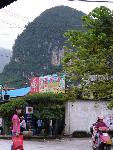
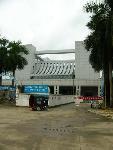
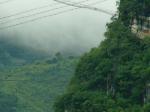
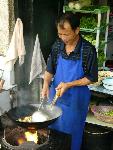
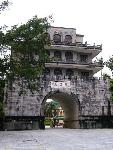
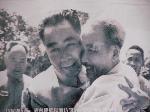
 Copyright © 1998-2025 All rights reserved.
Copyright © 1998-2025 All rights reserved.